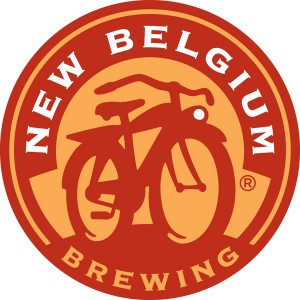
While Lauren Salazar was in Las Vegas for several of the New Belgium events in town, I was given a chance to sit down with her and discuss New Belgium’s creative process and some of their upcoming projects.
La Folie has become one of my favorite beers and being able to sit down and talk with the blender who makes La Folie was awesome. I’m really looking forward to all of the new beers that we discussed, as well as New Belgium’s expansion.
Hooked on Hops: You’re known for being the wood cellar manager at New Belgium and blending sour beers, like La Folie. What are some non-sour beers that you enjoy drinking?
Lauren Salazar: I’m a crazy stout fan! Anything dark, malty, huge; that’s my thing. Old Rasputin, Big Bad Baptist, I love anything huge and big. (more…)
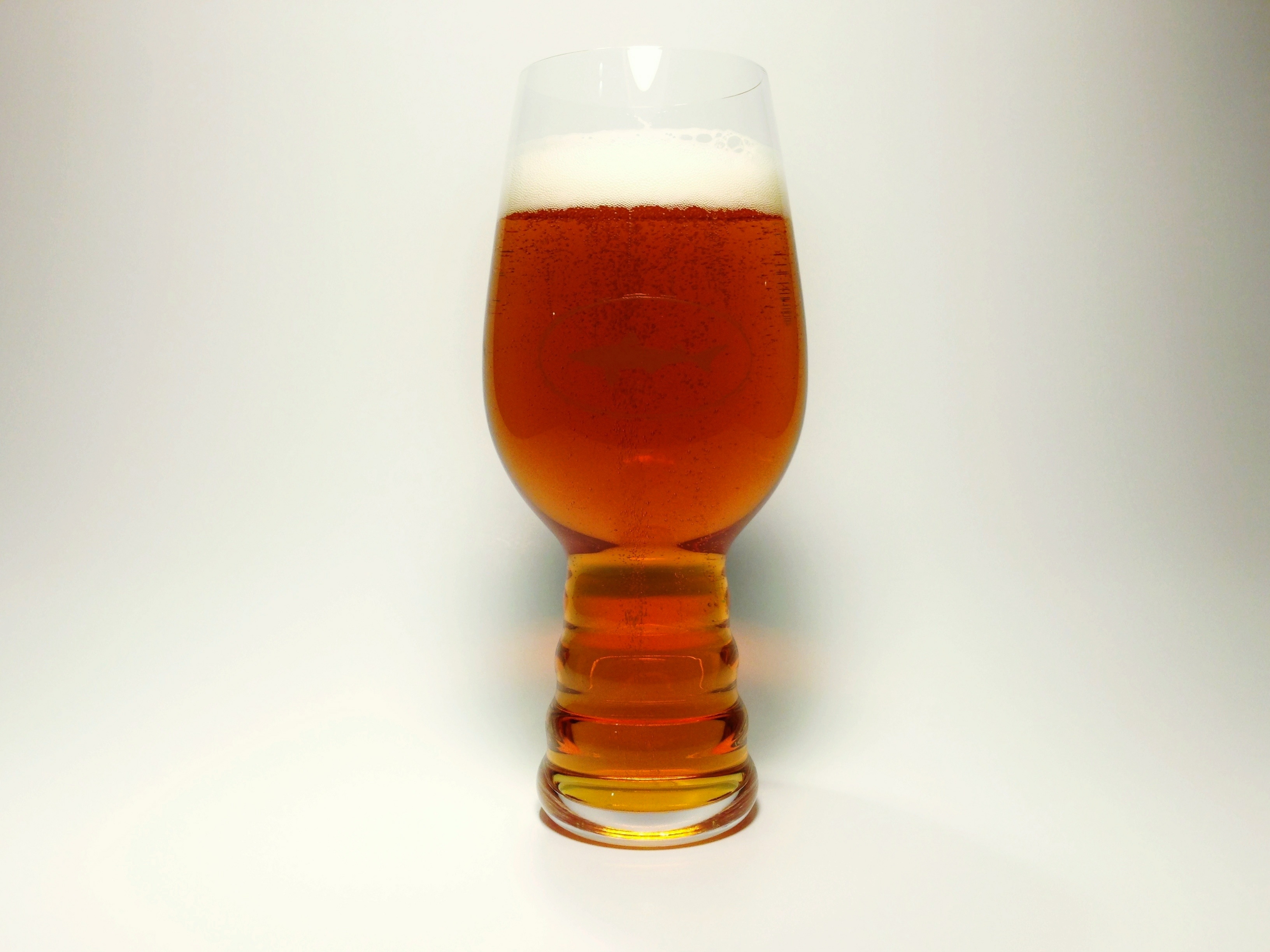
A year ago when it was first announced that Dogfish Head and Sierra Nevada were partnering up with Spiegelau to create glassware specifically made for the IPA, the excitement was huge. And now that it’s finally available, everyone is calling it marketing gimmickry. (more…)
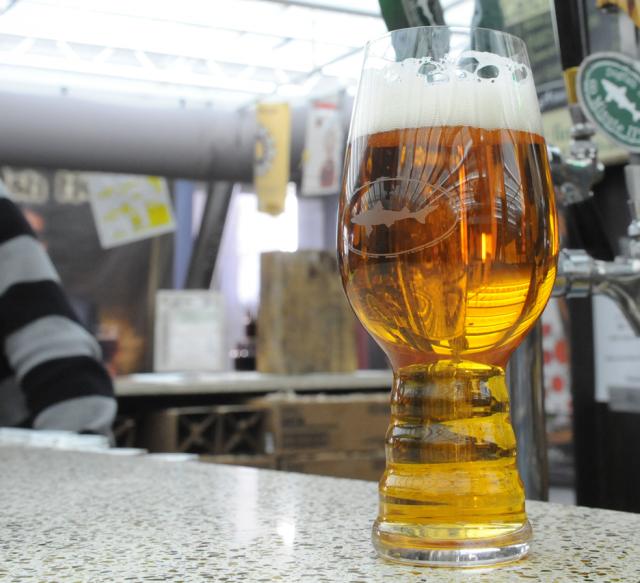
Calagione, his wife, Mariah, and Sierra Nevada’s father-son team of Ken and Brian Grossman worked hand-in-hand with Spiegelau to bring this glass to life. Through a series of design and tasting sessions, the team created a glass with:
Any thoughts on this? I’ve personally never been a fan of top heavy glasses (like the Sam Adam’s glasses) but I do kinda like the look of this one. Click above to view Dogfish Head’s full announcement.
Simply put, cask beer is a beer that is brewed and fermented, and then placed into essentially a small keg, where it is then conditioned and naturally carbonated through a secondary fermentation. The beer is transported to its serving location in this vessel and served directly from this vessel without the use of any additional pressure.
That being said, cask beer is delicious. Todd English’s PUB and Public House always have at least one cask beer available at any given moment. There are a couple other places in Las Vegas that also have cask beers available off and on. If you get the chance, try out one of these beers!
Here’s what to expect: (more…)
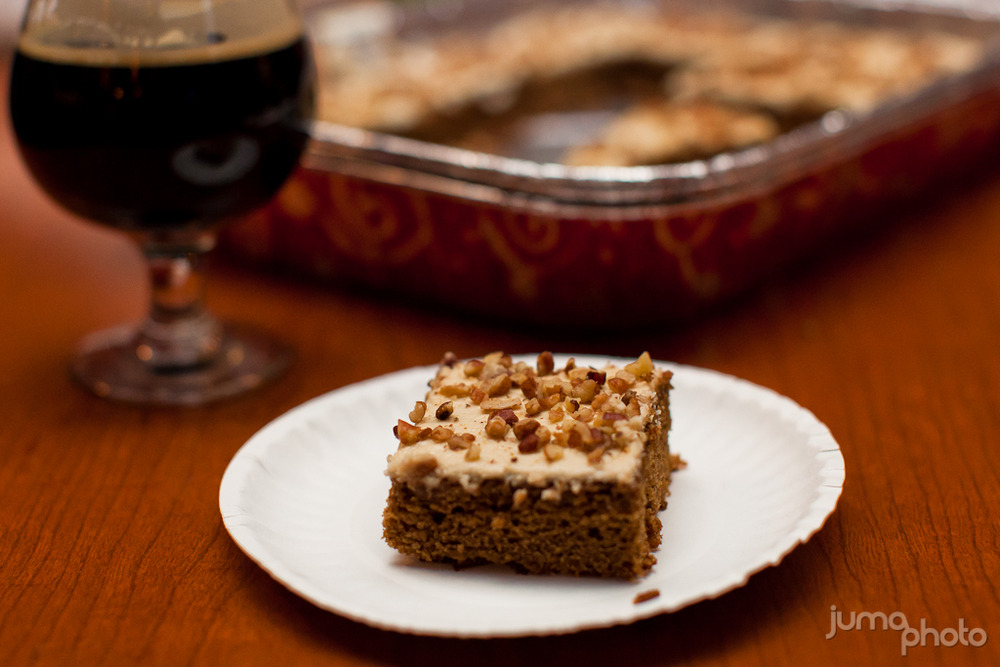 One week into 2013 and I finally took the time to look back at 2012. I thought I’d reshare several of the most read posts over the past year. I hope you all enjoy this look back!
One week into 2013 and I finally took the time to look back at 2012. I thought I’d reshare several of the most read posts over the past year. I hope you all enjoy this look back!
#drinklocal
An ode to supporting all the businesses here in Las Vegas that promote craft beer across the valley!
The Great Las Vegas Festival of Beer
A recap of the 2nd annual Vegas Festival of Beer. Worth reading up considering the 3rd Festival of Beer is coming up soon!
Hooked on Hops at Tenaya Creek
Last year we held a special food pairing at Tenaya Creek with their Imperial Stout and Goran’s gingerbread stout cake!
An Updated Guide to Aging Beers
Worth reading through a few times if you have any interesting in understanding how to age beers.
Freshness Matters
Worth reading through a few times to understand the importance of drinking beer as fresh as possible.
Kind of contradicts the aging article huh? Nope. Read both and learn why!
Bacon and IPA Spaghetti
Another one of Goran’s food recipes featuring beer!
The Las Vegas Downtown Brew Festival
After the success of the Great Las Vegas Festival of Beer, 2012 saw the premiere of the Downtown Brew Festival!
What The Craft Beer Scene Can Learn From The Metal Scene
Last year saw craft beer fans searching for the most obscure breweries possible, while calling out the pioneers as overrated. Armando shared his thoughts here.
Danny is a Ninja
Right at the tail end of the year, we launched a video mini-series reviewing some beers. The first iteration is New Belgium’s La Folie. We have since added Dogfish Head 120 Minute IPA, and Stone Vertical Epic 12.12.12
 While I was studying to take the Certified Cicerone® exam, there were several books that I read, and studied, to prepare myself. One of those books was Randy Mosher’s Tasting Beer. There is likely not a single other book that eloquently goes into such detail that Mosher does, in describing and understanding sensory evaluation and taste perception of beer. (more…)
While I was studying to take the Certified Cicerone® exam, there were several books that I read, and studied, to prepare myself. One of those books was Randy Mosher’s Tasting Beer. There is likely not a single other book that eloquently goes into such detail that Mosher does, in describing and understanding sensory evaluation and taste perception of beer. (more…)
If you read my post on glassware, then you should be aware of how important your sense of smell is in affecting your flavor perception. Going along the same lines of of proper tasting techniques, I thought I’d expand a bit further and talk about the flavors that you don’t want to taste.
Simply put, off flavors are the wrong flavors, the bad flavors, the flavors that aren’t supposed to be there. Why would anyone want to be able to recognize these flavors? If you are a brewer, it is important to know when something is negatively impacting the flavor of your beer. If you serve beer, it is important to know that you are serving your patrons the best quality beer, free from imperfections, to give them the best possible experience. What about all the other craft beer drinkers? Should they go through some sort of off flavor training? On the one hand, it is highly beneficial to be able to tell when the your beer in your fridge isn’t fresh anymore and should be tossed, or whether something is wrong with your beer when you go out to bars. On the other hand, once you learn to recognize off flavors, there’s no unlearning what you know. You’ll see (taste?) everything in a whole new light. Certain flavors will just stick out to you, but stay hidden to anyone who hasn’t gone through off flavor training.
I won’t go into too much detail about specific off flavors. Instead I want to focus on some guidelines of the two common places that off flavors become produced: During fermentation, and storage/serving.
During fermentation:
Most off flavors are actually normal byproducts of fermentation. If you go to White Labs’ website for example, they will give you the specific amounts of different off flavors that their yeast produce. Depending on the style, some of these off flavors are expected, and even desired. British yeasts will typically have more diacetyl than other yeast strains, and lager yeasts usually produces more acetaldehyde than other yeast strains. Improper techniques can exasperate these flavors far more than they should be, and they will then become detrimental to the beer.
There are other off flavors that can be produced durning production by other sources besides just the yeast. Again, these can be controlled by proper brewing techniques. These are out of a customer’s control, and thankfully, usually not noticed in commercial level brewing, so I won’t detail any of these specific flavors. Homebrewers however, would greatly benefit from studying these further. There are links at the end for further study.
Improper Storage/Serving:
All of the off flavors that can be produced during this stage can be prevented. Anyone who serves beer should be well aware of how to prevent these, as well as anyone who cares about drinking beer the way it’s supposed to be enjoyed.
The most common off flavor in this regard would be oxidation. Oxidation occurs when beer gets in contact with oxygen. Despite being sealed, beer bottles are not air tight and over time, will slowly get more and more oxidized. This is why it’s best to always drink beer fresh. Heat will increase the speed at which oxidation occurs, which is why it is best that beer stays refrigerated as much as possible.
Oxidized beers will develop a variety of different flavors, with papery/cardboard like being the most common. If you don’t understand what I’m talking about, suck on a wet piece of a cardboard box and you’ll get the idea. A little vinous or sherry like flavors can also develop. While these flavors are ideal in a barley wine (explained further here), in average alcohol strength beers, these flavors make the beer a bit unpleasant.
Keep beer out of sunlight, especially if it is a hoppy beer. Fun game: pour an IPA into a clear glass and leave it out in the sun for twenty minutes then drink it. Yeah, that’s what a skunked beer tastes like. The sunlight will literally take elements of the hop compounds in a beer, and convert them into essentially the same compound that gives skunk spray it’s wonderful aroma.
Lastly, if you serve beer from a tap, CLEAN YOUR TAP LINES! Beer has residual sugars and various trace minerals. Failure to clean tap lines means these sugars and minerals begin to coat the interior of the beer line. Once it starts to build up, it begins to harvest bacterias that alter the flavor of the beer. Typically, the flavor will start to become slightly acidic, or sour, and simultaneously becomes a bit buttery. The buttery flavor is from a compound called diacetyl, the souring is from a bacteria known as Pediococcus. To prevent these types of off flavors, it is important to clean your tap lines at least every two weeks! Only flushing your lines with water does not count as cleaning them. Sadly, to many bars around town, this standard sounds over dramatic. Trust me, there is a difference in flavor and aroma when you have a beer from a bar that cleans their tap lines regularly, and one that doesn’t.
For more information on off flavors, this guide from MoreBeer! is very helpful. Otherwise, feel free to ask!

Pliny the Elder is a fascinating beer, and not only for the fact that it is an incredible IPA. There is such an allure, mystique, and reverence for this beer.
It is one of the highest rated IPAs in the world. Despite it’s year round availability, it never seems to be available in its distribution markets. And when it is available, retailers often limit the amount that can be purchased at a time, or, it is hidden in the back and must be requested for by name, possibly with some sort of secret password. Combined, this makes it a sort of liquid gold amongst craft beer enthusiasts.
Is Pliny that significant? Are there no other IPAs that are as good as Pliny? Is it truly, a one of a kind beer that cannot be recreated by any other brewery than Russian River? When you word it like that, it begins to sound ridiculous. Of course there are other incredible IPAs that are just as good as Pliny, so why the hype? Answer: It’s always fresh.
How much, exactly, does freshness matter? If you travel deeper into the inner craft beer circles, you’ll start to hear the purists declare that Pliny should only be consumed within 30-45 days of bottling. They say that it has to be as fresh as possible, otherwise it’s not as good. But the same can be said for any IPA. As I mentioned in my aging guide, hop aroma and bitterness fade rather quickly. Being as the whole point of an IPA is the hops, it makes sense that the fresher it is, the more vibrant the aroma and flavor is.
Owner Vinnie Cilruzoe is extremely cautious of growing too fast, to the point where Russian River’s slow growth is causing an exponential expansion in demand for their beers. But this has ensured that the hop forward beers, like Pliny the Elder, don’t sit on the shelf very long, meaning that if you are lucky enough to find it, it is likely to be extremely fresh.

Stone Brewing Company is another brewery that comes to mind that emphasizes how important freshness is. They have repeatedly stated that none of their year-round beers should be aged. The above image can be found on the back of their IPA bottles. The above link serves as a method for consumers to report Stone beer that was not available within the ‘best by’ date. Most notably, this past summer Stone released a new IPA titled “Enjoy By XX-XX-XXX,” with the ‘X’s’ being replaced with a specific date. Stone has a significantly larger distribution map than Russian River does. To ensure that Enjoy By is available as fresh as possible, Stone limits each batch to only 2 or 3 markets at a time, determined by consumers voting at the Enjoy By site.
To clarify however, Pliny the Elder is an amazing IPA. It has a sweet, lemony nose with a rich piny taste. Pliny has a crisp, light body, likely from using an addition of sugar in the boil. The freshness factor definitely helps, as it accentuates the pine and citrus flavors. But even if you drink a bottle 2 months past bottling, it is still a fantastic IPA.
If you want a clear example of how important freshness is in beer, visit one of our local breweries, like Tenaya Creek, Big Dog’s, or Chicago Brewing Company. There is no travel time in the beers that are served at these brewpubs. The beer is brewed and served on premise, making it the freshest beer you can find. Joseph James is another local brewery that makes a fantastic IPA. While they don’t operate a brewpub, their beers still have a very short travel time to our local retailers. You’ll notice that IPA’s from all of these breweries have an aroma and bitterness unlike most other IPA’s available in our state that were distributed from somewhere else.
For more information in understanding freshness and aging, check out our aging guide.
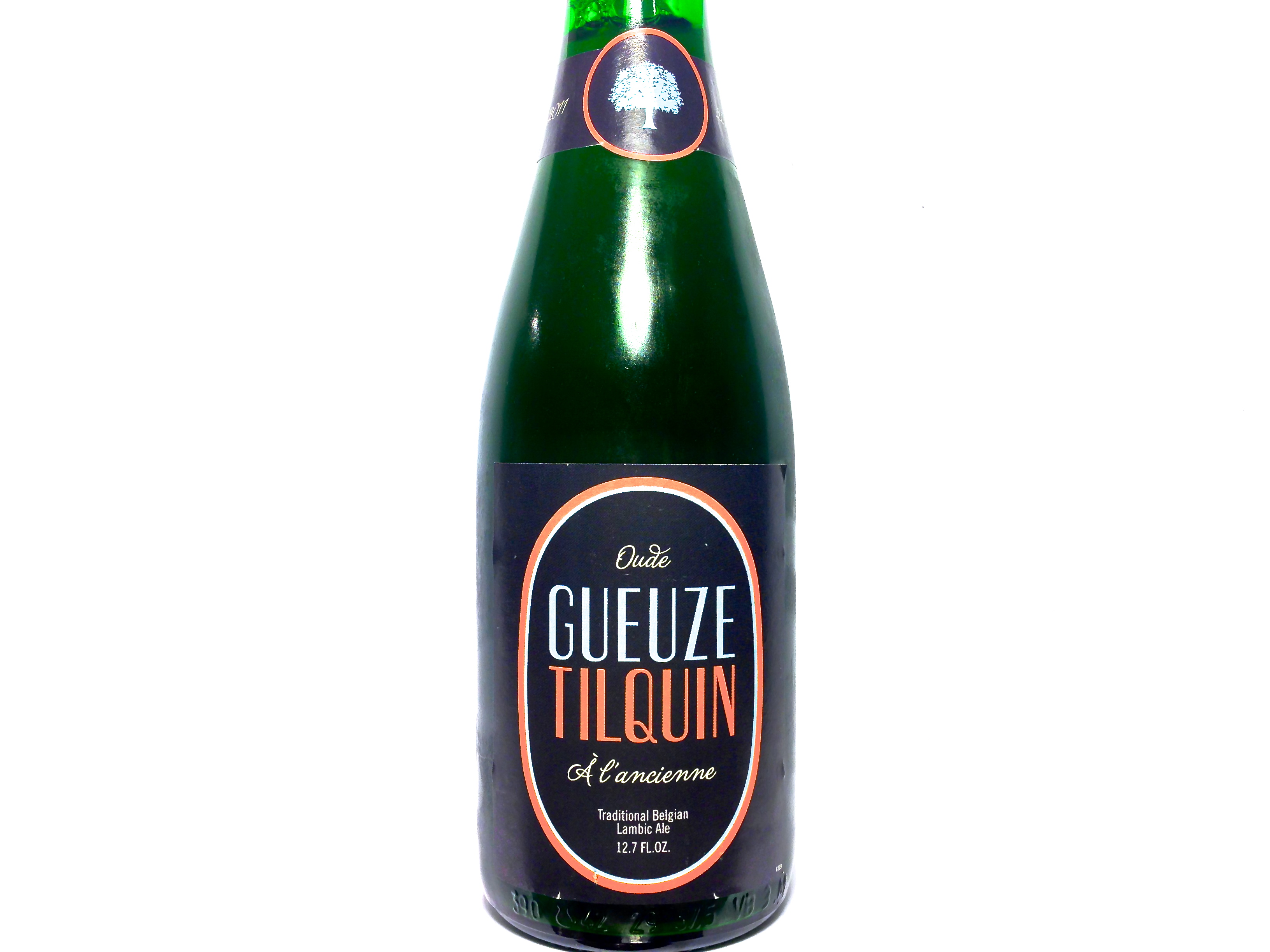
Sour beers, while they may have more history than any other beer style, are quickly emerging to becoming quite the trend here in America. I’m going to take a quick moment to briefly explain what makes a beer sour, and describe some of the more common styles of sour beer.
Hopefully you’ve read my Science of Yeast articles. In the second article, I explained the chemical equation for the fermentation of sugar into carbon dioxide and ethanol. The third article ended by briefly explaining the existence of wild yeasts and bacterias that are sometimes used in beer production. To put the two together: while the Saccharomyces strain of yeast will consume sugar and turn it into alcohol, there are other microscopic organisms that will consume proteins and nutrients and turn them into acid, typically lactic acid. Lactic acid is sour, as you should know if you’ve ever eaten plain yogurt.
American breweries that are making sour beers are typically adding very specific bacterias into their beer to produce lactic acid. The most common bacterias used for this process would be Pediococcus Damnosus and Lactobacillus Delbruckii. While this makes for an exacting, and nearly reproducible, product, traditional sour beers were never made this way…
Traditional Belgian lambics are one of the most fascinating styles of beer. Rather than adding a single and sterile strain of bacteria, they simply let the beer ferment spontaneously. That is, once the beer is brewed, the hot wort is transferred to a coolship in the attic. A coolship is basically a large, shallow pan that is left wide open. The windows in the cobweb filled attic are also left wide open, to allow the Belgian air to pour in and cool the hot wort. The beer is then transferred off into barrels and left to ferment. While the beer was left exposed overnight in the coolship, as many as a few hundred different strains of yeast and bacteria enter into the beer. This collection of living organisms will ferment and acidify the beer over the next several years. Due to the cornucopia of yeasts and bugs that are added to coolships, very few American sour beers can even come close to the complexity of a Belgian lambic (however it is worth mentioning that there are a couple American breweries who also spontaneously ferment their beers).
Once the lambics are stored in barrels, the brewers will then age these beers for several years, occasionally offering different vintages for sale. The younger lambics have a sharp sourness to them. As they age, they stay sour, however they become balanced out with the other phenols and esters that are produced by the various yeasts present in the beer.
Guezue is the holy grail of sour beers. A gueuze is a beer made by blending one year, two year, and three year old lambics together. This creates a beer that not only features the sharp sourness of a fresh lambic, but also the smoothness of an aged lambic. Guezue is one of the most complex beers that I have ever tasted, with different layers of flavors present in each sip.
As I’m writing this, I’m drinking an Oude Gueuze Tilquin à I’Ancienne. The aroma is like smelling a grapefruit peel, with a bit of an added mustiness, and a slight wood like aroma. The initial up front flavor is mix of various citrus fruits, like grapefruit, lemon, and lime, but it then fades and reveals various other fruits as well. Fruits like green apples, and berries like tart cherry become more present towards the finish. The beer has a champagne like carbonation and it gives the beer a dry and crisp finish. The finish shows off it’s musty, barnyard like qualities that fade into a lingering sweetness that resembles the sweetness in an orange.
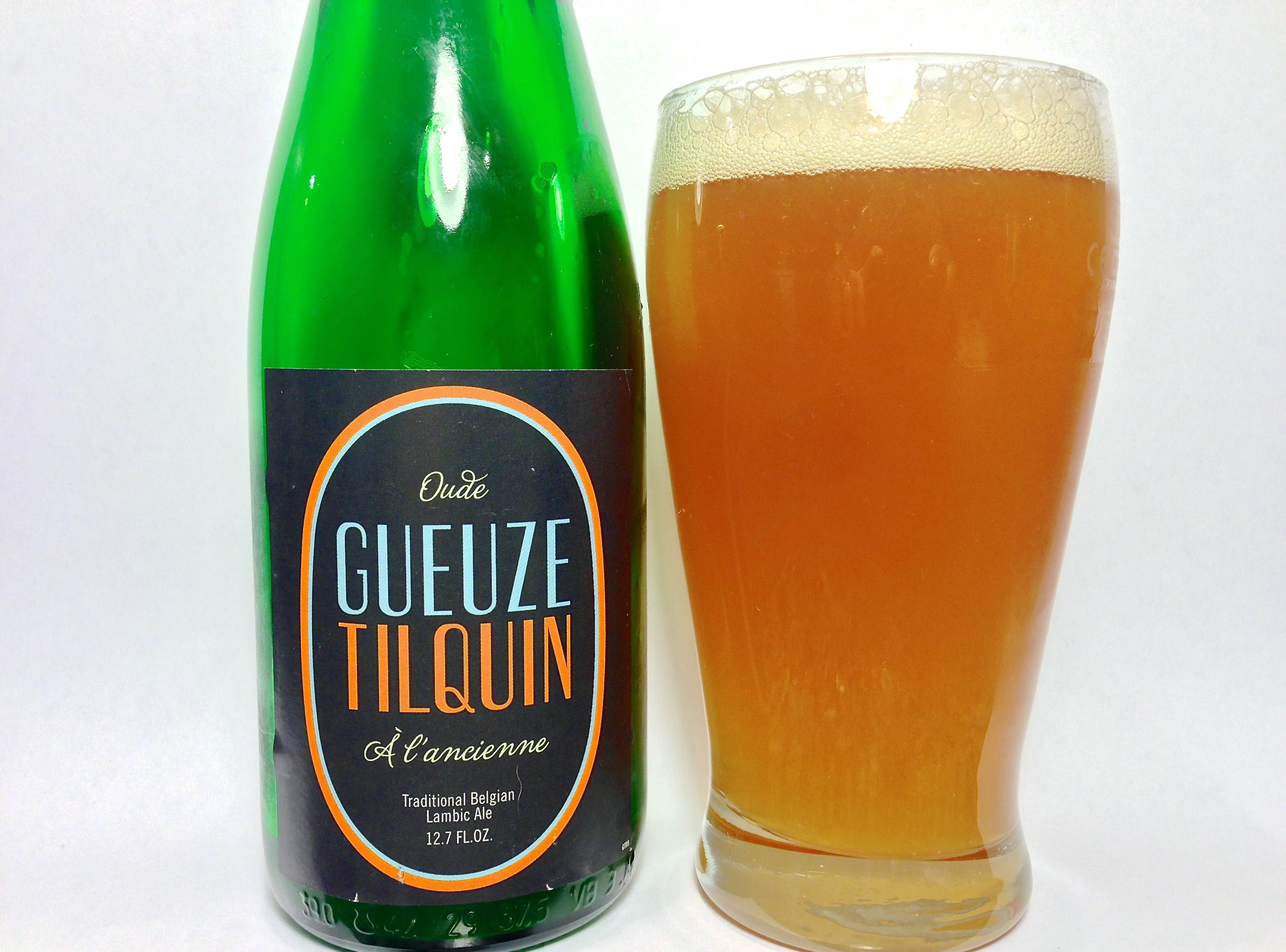
I fully admit that the first time you try a sour beer, you may not like it. It is difficult to prepare yourself for something like it. The first time I had New Belgium’s La Folie, I had a difficult time finishing it. Now I can’t get enough. Like most things in life, it is an acquired taste. However once you acquire it, you can never let it go! Gueuze, though hard to find in Las Vegas, are a good start since they are a bit balanced in their flavor. Jolly Pumpkin makes several approachable sour beers as well. Something like Bam Bière isn’t exactly sour, more so a little tart. This will start to build your tolerance and acceptance for acidity in beer. Work your way up to something like La Folie. It’s a deliciously complex beer, but it is intense in it’s sourness!
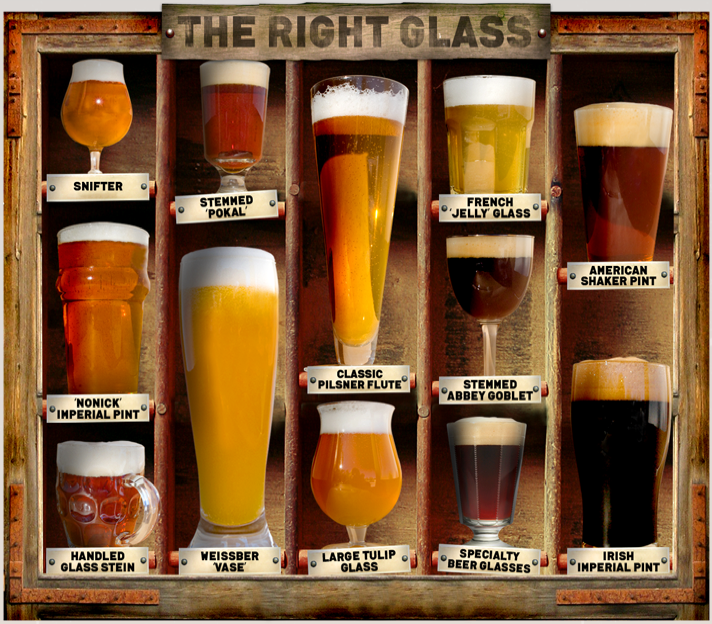
Glassware is one of the most under appreciated aspects of enjoying craft beer. That truth is however, that glassware is probably one of the most important factors in whether a beer can be found enjoyable or not.
First, it is important to understand how vital aroma is to contributing to flavor perception. The human tongue is only capable of discerning five different tastes (sweet, salty, sour, bitter, and umami). But if these are the only tastes that we can detect, how is it that we can perceive the difference between one beer to the next? Our sense of smell, on the other hand, can detect between 4,000 and 10,000 different odor molecules! Our perception of flavor is in part determined by what our tongue tastes, but also the smells that our nasal passage detects.
If you want to truly taste a beer to the fullest, inhale through your nose as you are drinking, hold your breath as you taste it in your mouth, and breath out your nose after you swallow. By drinking beer this way, you are taking in the aroma and smell of the beer as you are drinking and after you swallow, you are allowing the aroma to travel back though your nasal passage so you can get a good sense of it’s aftertaste.
So, now that you know how important your sense of smell is, why does glassware matter? You want something that is going to allow you the best possible experience of being able to smell and take in the aroma of you beer. How well do you think you can smell your beer by drinking out of the bottle?
Aside from contributing to aroma perception, proper glassware also depends on the style of beer you are drinking. The above image is taken from craftbeer.com This link is a great resource for learning and understanding what glassware best compliments which style of beer. I highly recommend checking it out.









